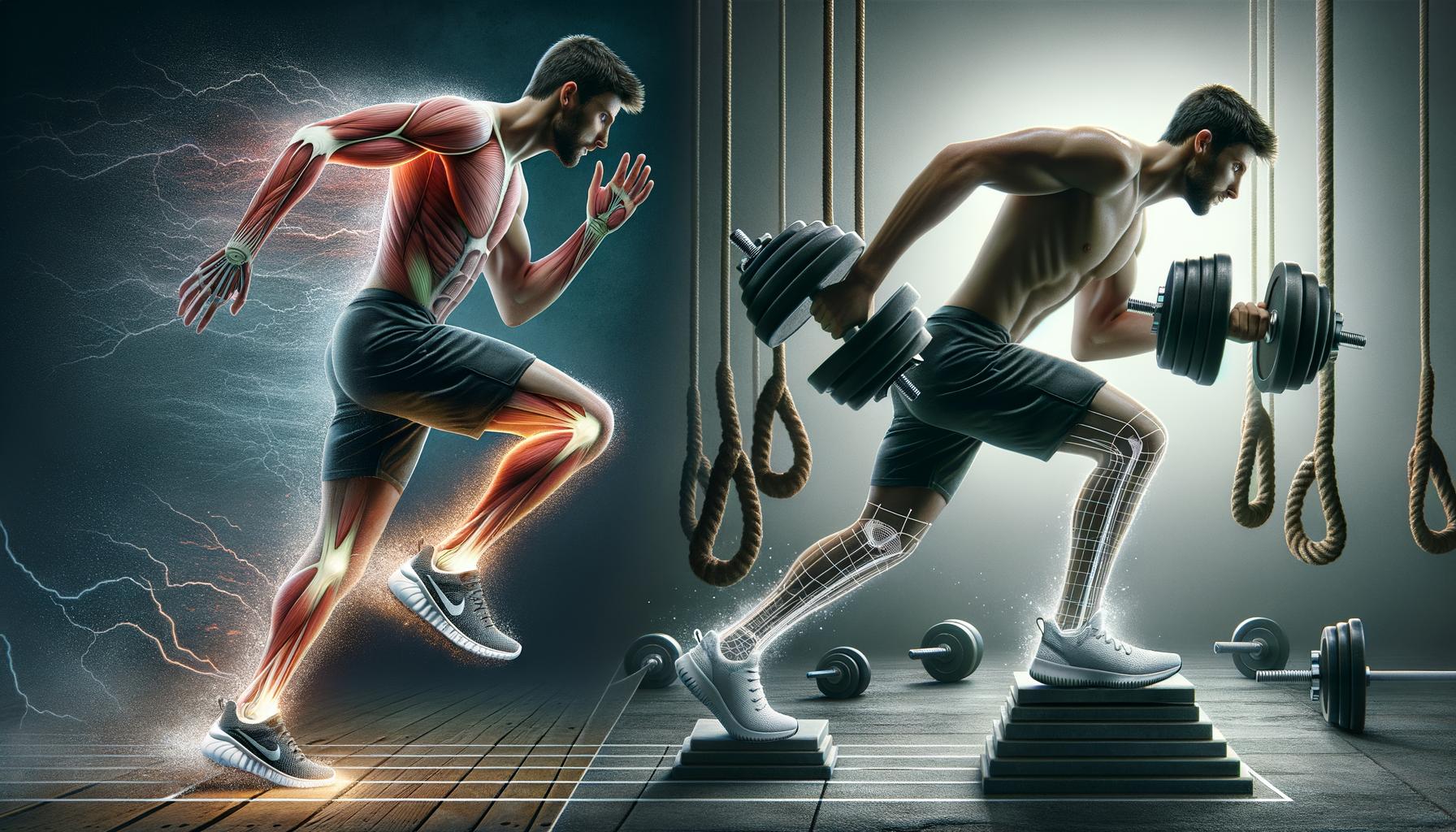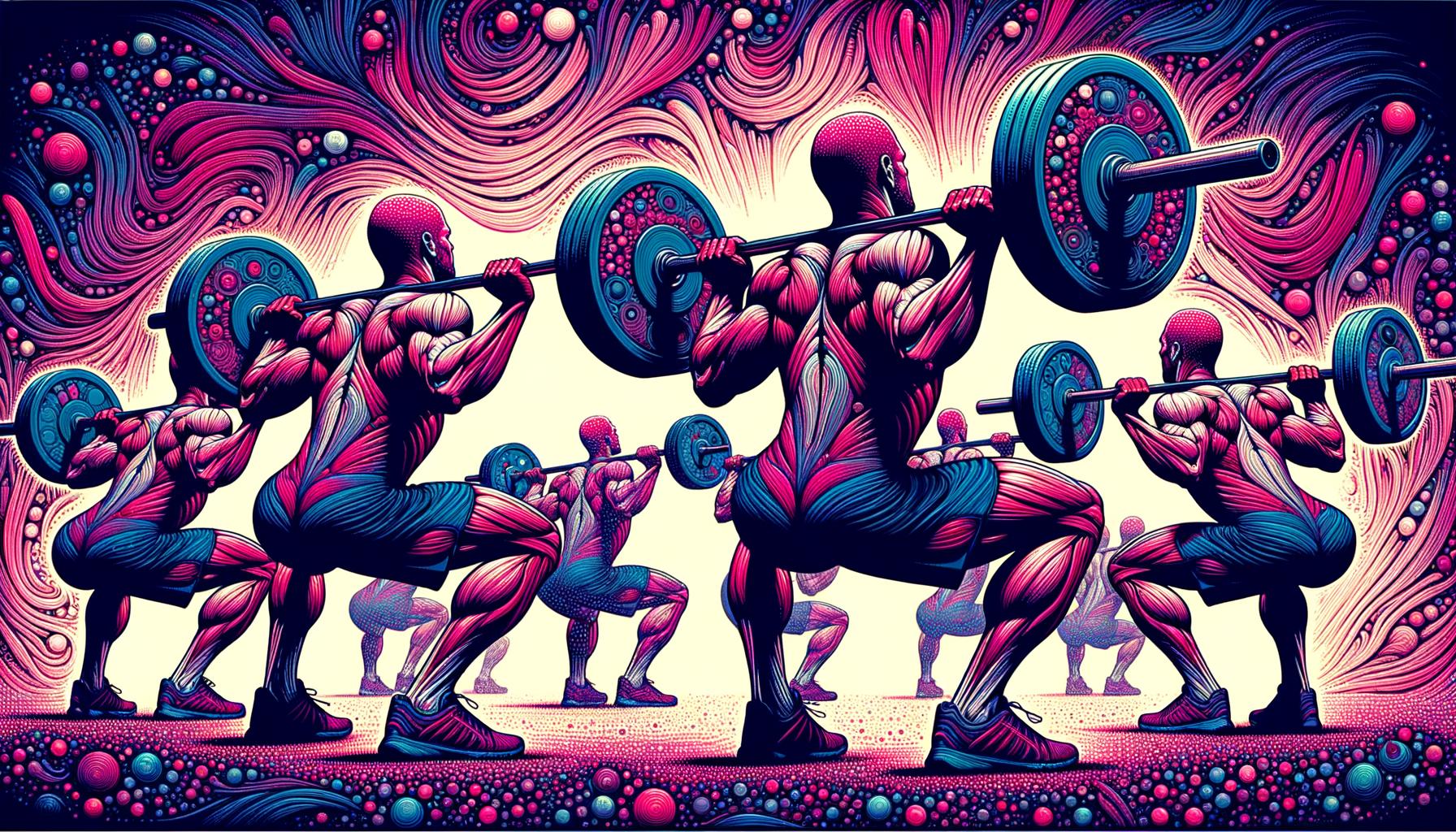· fitness · 16 min read
Selecting Footwear for Injury-Free Training
Explore how the right footwear can enhance your workout performance, prevent injuries, and the rise of minimalist shoes in athletic training.

In This Post
The Fact Why Should I Care How To Put In Action Start Tomorrow Guide How does it effect my ability to focus How does it impact my daily life How does it help me make friends How does it help me manage stress How does it effect my mood Summary: Remember Refresher Checklist The Full Research Article CitationsPrint Out The Tomorrow Checklist!
Sign up for our newsletter and receive a copy today, so that, you can start tomorrow! Or the next day, or the day after that. I forget everything and starting things is hard at least for me so these checklists are godsend.
Print Out The Remember Refresher Checklist!
Sign up for our newsletter and download your own copy of the Remember Refresher Checklist, so that, you can easily put it on your fridge and help you stay on target towards your WHY. Every little bit helps.
Introduction
The Crucial Link Between Footwear and Workout Performance
When it comes to achieving your fitness goals, the right pair of shoes can make all the difference. Athletic shoes, running shoes, weightlifting shoes, and cross-training shoes are not just about style; they’re tools that can enhance your workout efficacy, provide critical arch support, and protect you from injuries like plantar fasciitis or running injuries caused by poor foot strike. The design of athletic footwear incorporates advanced technology for shock absorption, durability, and foot health, ensuring every step you take contributes positively towards your athletic performance.
Choosing the right type of shoe isn’t just a matter of comfort. It’s about matching your footwear with your training regime. For instance, the shoe cushioning in running shoes can help absorb impact, reducing the stress on your knees and ankles, while weightlifting shoes offer a stable base for heavy lifting, improving your form and preventing accidents. With every sport or physical activity demanding a unique set of movements, selecting the appropriate footwear becomes crucial. Here’s a simple checklist to keep in mind when choosing shoes for your workouts:
- Ensure proper fit and room for toes
- Look for specific features suited to your activity (e.g., cushioning for running)
- Consider arch support and shoe durability
- Assess the heel-to-toe drop based on your comfort and biomechanics
- Opt for shoes that well align with your training needs and frequency
Overview of Minimalist Shoes and Their Rising Popularity
Minimalist shoes, characterized by their thin sole and minimal cushioning, aim to mimic the experience of barefoot running while providing some protection from the elements. Emerging as a trend in response to the evolving understanding of biomechanics and orthopedic footwear, minimalist shoes emphasize natural foot movements, a stark contrast to the heavily cushioned running shoes that have dominated the market.
These shoes have gained popularity among athletes and fitness enthusiasts seeking a more “natural” foot strike and improved athletic performance. Advocates for minimalist running believe that it encourages a more natural running form, potentially leading to fewer injuries and enhanced efficiency. They’ve become a significant part of the athletic footwear trends, appealing to those intrigued by their purported benefits in training regimes, injury prevention, and promoting foot health.
Understanding the Impact of Footwear on Workouts
The shoes you wear can make or break your workout. Yes, it’s true! The type of footwear can significantly influence both your training efficacy and your risk of injury. When selecting shoes for working out, it’s not just about the aesthetics or brand; it’s about how those shoes impact your body during exercise.
How Footwear Influences Exercise Efficacy and Injury Risk
Each activity stresses the body in unique ways, and the right type of shoe can help mitigate harmful stress. For example, running shoes are designed with specific features like extra cushioning to absorb impact, whereas weightlifting shoes offer a stable surface for heavy lifting. Here’s a quick checklist to help you match your workout to your footwear:
- [] Running: Look for shoes with good shock absorption and arch support.
- [] Weightlifting: Choose shoes with a low, stable platform.
- [] Cross-Training: Opt for shoes that offer versatility, with moderate cushioning and support.
Wearing improper footwear can lead to a range of issues, from blisters and discomfort to more serious conditions like plantar fasciitis, achilles tendinitis, or even stress fractures. These ailments can quickly sideline any athlete, highlighting the importance of choosing the right shoe for the right activity.
The Science Behind Foot Strike Patterns and Injury Prevention
Understanding your foot strike pattern is crucial in preventing injuries. There are three main types of foot strikes: heel, midfoot, and forefoot. Each of these patterns affects how forces are distributed through your body upon impact. Heel strikers, for instance, may benefit from shoes with enhanced heel cushioning to reduce impact stress.
The science shows that certain types of footwear can encourage a more natural foot strike, leading to better alignment and reduced injury risk. Minimalist shoes, for example, can promote a forefoot or midfoot strike, which may decrease the likelihood of knee pain and injuries. However, transitioning to these shoes should be done gradually to avoid overuse injuries.
By understanding how your footwear influences your foot’s interaction with the ground, you can make informed choices that optimize your athletic performance and safeguard your health. Remember, the best shoe for you is one that supports your unique biomechanics and enhances your comfort and performance across a variety of training regimes.
Pros and Cons of Minimalist Shoes
Minimalist shoes, also known as barefoot running shoes, have become increasingly popular among athletes and fitness enthusiasts. These shoes are designed to mimic the natural biomechanics of barefoot walking or running, while providing minimal interference. Understanding the benefits and drawbacks of minimalist footwear is crucial for anyone considering making the switch from traditional athletic shoes.
Benefits of Using Minimalist Shoes in Training
Minimalist shoes offer several advantages that contribute to their growing popularity:
- Improved Foot Health: By allowing the foot to move more naturally, minimalist shoes can lead to stronger foot muscles and improved foot health over time.
- Enhanced Sensory Feedback: The thin sole of a minimalist shoe provides better ground feedback, which can improve balance and agility during workouts.
- Promotion of Natural Gait: Minimalist shoes encourage a more natural running gait, reducing the likelihood of injuries related to overstriding and heel striking.
- Weight Reduction: These shoes are typically lighter than traditional athletic shoes, which can make movement feel more effortless and increase athletic performance.
Drawbacks and Potential Risks of Minimalist Footwear
Despite the benefits, there are also some potential risks associated with minimalist shoes:
- Increased Injury Risk for Some: Individuals not used to barefoot training may experience injuries such as plantar fasciitis or metatarsal stress fractures due to the lack of cushioning and support.
- Adaptation Period: Transitioning to minimalist shoes requires a period of adaptation. Improper or too rapid transition can lead to discomfort and injury.
- Limited Protection: Minimalist shoes offer less protection from environmental hazards, such as sharp objects on the ground, compared to traditional shoes.
Comparative Analysis: Minimalist Shoes vs. Traditional Athletic Shoes
When comparing minimalist shoes with traditional athletic shoes, it’s important to consider several factors:
Checklist for Selecting Between Minimalist and Traditional Shoes
- Training Regimes: Consider the types of workouts you engage in. Minimalist shoes may be more suitable for running and agility workouts, while traditional shoes may be better for activities requiring more stability, such as weightlifting.
- Foot Health: Those with pre-existing foot issues, such as plantar fasciitis or pronation/supination imbalances, might require the extra support that traditional shoes offer.
- Biomechanics: Your personal biomechanics, including foot strike and gait, should influence your choice. Gait analysis can help determine which shoe type best supports your natural movement.
- Shoe Cushioning and Support: Athletes who prefer or require more cushioning for shock absorption might find traditional athletic shoes more comfortable, especially for high-impact activities.
- Adaptability: Consider your willingness and ability to adapt to a new style of footwear. The transition to minimalist shoes can be gradual and requires commitment.
In summary, minimalist shoes offer a way to train that’s closer to natural biomechanics, potentially improving athletic performance and foot health. However, they’re not without risks, and the choice between minimalist and traditional athletic shoes should be made based on individual needs, biomechanics, and the types of activities engaged in. Whether choosing minimalist or traditional footwear, selecting the right shoe is essential for injury prevention and optimizing workout efficacy.
Choosing the Right Footwear for Your Training Needs
Finding the best pair of shoes for your workout routine goes beyond just picking out the latest trendy pair. Your individual biomechanics play a crucial role in determining which type of footwear will support and enhance your performance while minimizing the risk of injury.
Personal Biomechanics and Its Role in Footwear Selection
Every person’s body moves differently, and this uniqueness in movement is crucial when selecting workout footwear. Biomechanics refer to the way our bodies move, including how our feet strike the ground, the alignment of our ankles, knees, and hips during movement, and whether our arches are high, flat, or somewhere in between. Understanding your personal biomechanics is the first step in choosing shoes that offer the right type of support.
Footwear Considerations for Different Types of Workouts
Different activities demand different types of support and cushioning from footwear. Here’s a quick guide:
Running: Look for shoes with ample shock absorption, designed to handle the repetitive impact of foot strike on hard surfaces. Stability features should match whether you pronate (roll inward) or supinate (roll outward) when running.
Weightlifting: Shoes with a flat, stable base and minimal cushioning are ideal. They should offer a solid footing for heavy lifting, allowing for more precise weight distribution and balance.
Cross-Training: These activities require a versatile shoe with moderate cushioning, good lateral support, and flexibility, catering to the various movements involved in these routines.
Expert Tips on Assessing Foot and Shoe Compatibility
Finding the right shoe involves more than just knowing your size. Here are some expert tips to ensure your foot and shoe are perfectly matched:
- Know Your Foot Type: Use the “wet test” to understand your arch type by wetting your foot, stepping on a piece of paper, and observing the imprint. Your arch type can guide you towards the right shoe type.
- Gait Analysis: Many specialty running and athletic stores offer gait analysis to analyze your running style and find shoes that complement your movement patterns.
- Try Before You Buy: Always try on shoes later in the day (when your feet are slightly swollen from walking) and wear the type of socks you’ll use while exercising. Ensure there’s a thumb’s width of space between your longest toe and the end of the shoe.
- Walk and Jog in the Shoes: Test shoes by not just walking but also jogging a bit in the store to get a feel for their comfort, support, and flexibility.
- Check for Return Policies: Some stores offer trial periods, allowing you to return shoes after wearing them outside if they don’t feel right. This policy can be beneficial for finding the perfect match.
Checklist for Footwear Selection
- Conduct a biomechanics assessment: know your arch and gait.
- Choose workout-specific shoes: Running, Weightlifting, Cross-Training.
- Test shoes for comfort, support, and flexibility.
- Ensure a proper fit: space at the toe and snug at the heel.
- Check the store’s return policy on worn shoes.
In conclusion, while it might be tempting to choose a shoe based on aesthetics alone, understanding your personal biomechanics, the specific demands of your workout regime, and ensuring a compatible fit are paramount for enhancing athletic performance and preventing injuries. By following these guidelines, you can make an informed decision, leading to better support, improved performance, and a happier, healthier you.
FAQs (Based on “People Also Ask” Section from Google)
Why Is It Important to Choose the Right Type of Workout Shoes?
Selecting the right type of workout shoes is not just about style; it’s crucial for your comfort, performance, and prevention of injuries. The correct footwear ensures proper support for your feet, aligns with your individual biomechanics, and enhances your athletic performance across various training regimes. Whether you’re into running, weightlifting, or cross-training, the right shoes can make a significant difference. They provide the necessary cushioning, shock absorption, and stability, safeguarding your feet during high-impact activities and minimizing the risk of common issues like plantar fasciitis or running injuries.
Can the Wrong Shoes Actually Lead to Injuries?
Absolutely. The wrong type of shoes can be more than just uncomfortable; they can lead to a variety of injuries. Shoes that lack adequate support or cushioning might contribute to problems such as shin splints, knee pain, and even back issues. Moreover, footwear that doesn’t match your workout activity can increase the risk of accidents—such as slipping during a run or not being able to maintain proper form during weightlifting. Here’s a quick checklist to avoid choosing wrong footwear:
- Ensure proper fit - neither too tight nor too loose.
- Look for shoes with adequate arch support.
- Consider shoe cushioning and durability for your specific type of workout.
- Check the heel-to-toe drop for compatibility with your natural foot strike.
- Pay attention to pronation vs. supination needs.
How Do I Know If Minimalist Shoes Are Right for Me?
Determining if minimalist shoes are suitable for your needs involves understanding their benefits and weighing them against traditional footwear options. Minimalist shoes aim to mimic barefoot running, promoting a more natural foot strike and improving running biomechanics over time. However, they might not be for everyone, especially those requiring additional arch support or dealing with orthopedic issues. Consider the following before making the switch:
- Your current level of foot health and any existing conditions.
- Your foot’s pronation pattern—neutral, underpronation, or overpronation.
- The type of workouts you plan on doing, as minimalist shoes might not be the best for every training regime.
- Your adaptability to change—transitioning to minimalist footwear requires a gradual adaptation period.
- Consulting with a footwear expert or a podiatrist, especially for a personalized gait analysis, can offer invaluable insights into your suitability for minimalist shoes.
In summary, the journey to finding the perfect workout shoes involves understanding your body’s unique needs, the demands of your preferred fitness activities, and how various footwear options align with those factors. By paying attention to the specifics of shoe selection, injury prevention, and the potential benefits or risks associated with minimalist shoes, you can make an informed decision that enhances your training efficacy and overall foot health.
Conclusion
Recap: The Integral Role of Proper Footwear in Fitness
Throughout this discussion, one thing has been made abundantly clear: the type of footwear you choose plays a pivotal role in your fitness journey. Selecting the right shoes is not just about fashion or preference. It’s about enhancing athletic performance, ensuring workout efficacy, and, most importantly, preventing injuries that could sideline you. Whether it’s running shoes that offer the right combination of cushioning and support, weightlifting shoes that provide a stable base for heavy lifts, or cross-training shoes that can handle a variety of activities, each choice impacts your physical health and training results.
Key components like shock absorption, shoe durability, arch support, and the correct heel-to-toe drop are not mere features but essentials that cater to your foot health and biomechanics. Incorporating knowledge about your foot strike and understanding pronation vs. supination are crucial steps toward selecting footwear that supports rather than hinders your fitness goals.
Encouragement to Make Informed Footwear Choices
As we conclude our exploration of the connection between footwear and injury-free training, let us part with a few encouragements:
Research and Reflect: Before making any purchase, spend time understanding your personal biomechanics, the demands of your preferred training regimes, and how different shoes can meet those needs.
Consult with Experts: Consider a professional gait analysis or seek advice from certified fitness trainers and orthopedic specialists who can provide personalized footwear recommendations.
Prioritize Foot Health: Always choose shoes that promote healthy foot functions. Remember, the goal is to enhance your performance and protect your body from unnecessary harm.
Embrace Change: Don’t hesitate to replace shoes that no longer serve their purpose. Athletic footwear trends and technology are constantly evolving, offering new opportunities to improve your fitness experience.
Here’s a simple checklist to guide your future shoe selection process:
- Understand Your Foot Mechanics: Are you prone to pronation or supination?
- Determine Your Training Needs: Will you be running, weightlifting, or engaging in cross-training?
- Consider Shoe Features: Do the shoes offer adequate arch support, shock absorption, and durability?
- Seek Professional Advice: Have you consulted a healthcare or fitness professional for their input?
- Prioritize Comfort and Protection Over Style: Are you choosing health and safety over aesthetics?
By keeping these considerations in mind, you encourage a healthier, more informed approach to selecting workout footwear. Remember, the right shoes can be one of your best allies in achieving fitness success and longevity. So, take this knowledge forward, and make footwear choices that support your journey toward a stronger, injury-free body.
Relevant External Links
In our journey through selecting the right footwear for injury-free training, we’ve covered everything from the importance of the proper athletic shoes to the nuances of biomechanics and how they affect your workout efficacy. Now, as we wrap up, it’s essential to point you towards additional resources that can deepen your understanding and help you make informed decisions about your footwear. Below, you’ll find three invaluable links that are worth exploring:
Expert Footwear Selection Guide from the American Podiatric Medical Association - This guide is a treasure trove for anyone looking to understand the intricacies of selecting the right footwear to support their foot health. Whether you’re into running, weightlifting, or cross-training, this resource offers insights into shoe cushioning, arch support, and more, directly from foot care professionals.
Transitioning to Minimalist Running Shoes by Runners World - For those intrigued by the minimalist shoe trend mentioned earlier, this article is a must-read. It provides a comprehensive look into the world of barefoot running and minimalist footwear, touching upon aspects like foot strike, pronation vs. supination, and how the transition can impact your running injury risk and athletic performance.
Orthopaedic Guide to Healthy Footwear by the American Orthopaedic Foot & Ankle Society - If you’re concerned about plantar fasciitis, heel-to-toe drop, or ensuring the longevity and durability of your shoes, this guide provides an orthopedic perspective on footwear. It’s a great way to understand how different types of athletic footwear, from running shoes to weightlifting shoes and cross-training shoes, can impact your foot health.
Final Checklist for Selecting the Right Athletic Footwear
Before diving into those external resources, here’s a quick checklist to ensure you’re on the right track with your footwear selection:
Understand Your Foot Biomechanics: Everyone’s feet are different. Knowing your foot type and gait analysis can drastically influence your shoe selection.
Determine the Type of Workout: The demands of your workout regime (be it running, weightlifting, or cross-training) inform the type of shoe you need, impacting factors like shock absorption and arch support.
Consider Shoe Cushioning and Support: Key for injury prevention, especially for workouts that put a lot of pressure on your feet and joints.
Evaluate the Heel-to-Toe Drop: This varies greatly among shoes and affects your foot strike and pronation during movement.
Prioritize Durability and Breathability: Ensure your shoes can withstand your training regimes while keeping your feet comfortable and dry.
Keep Up with Athletic Footwear Trends: Sometimes, new technologies can significantly enhance workout efficacy and foot health.
Armed with the insights from this series and the resources above, you’re well on your way to making informed, health-conscious choices in your athletic footwear. Remember, the right shoes not only minimize injury risk but also enhance your overall athletic performance, making every step of your fitness journey both safe and effective.





